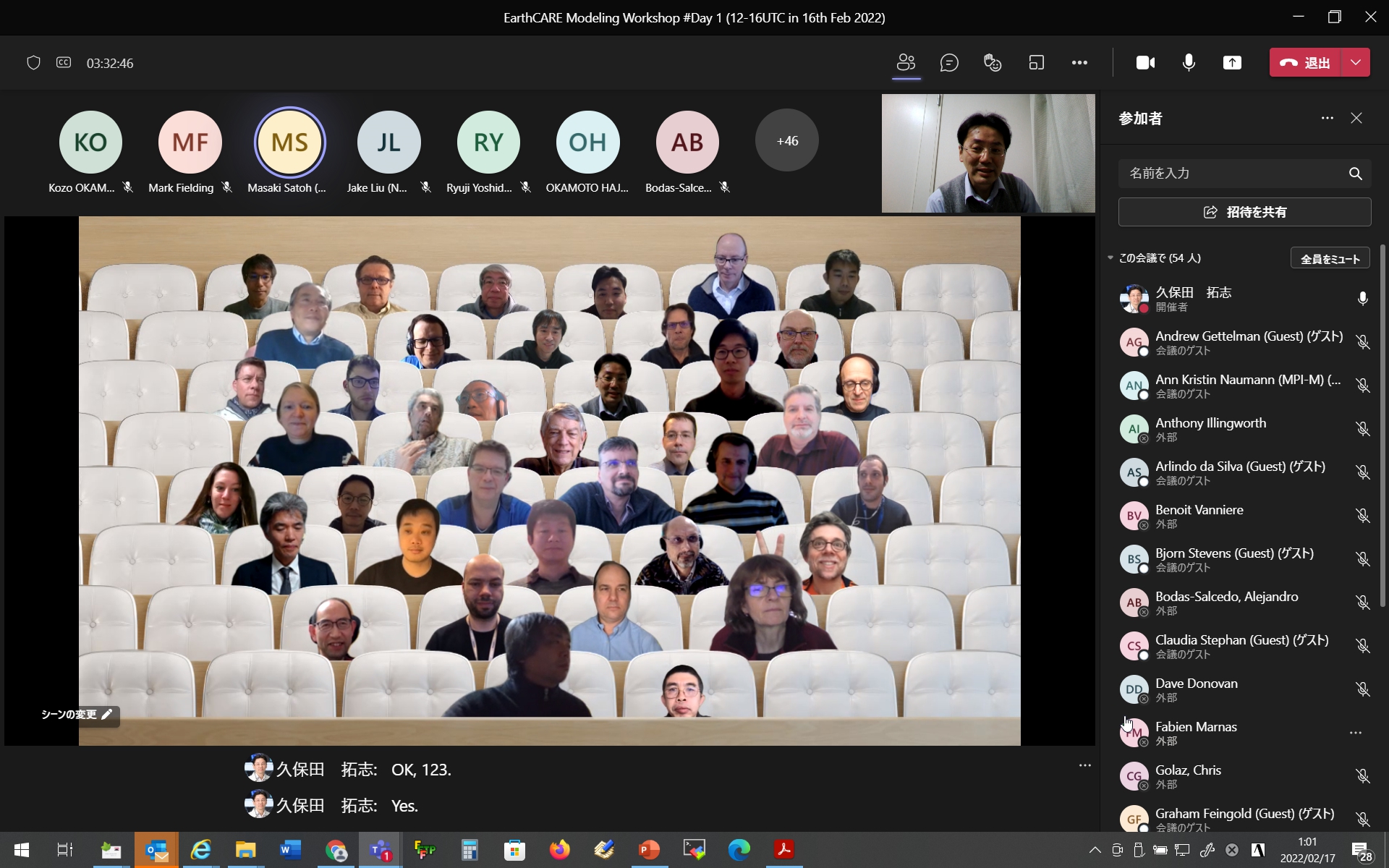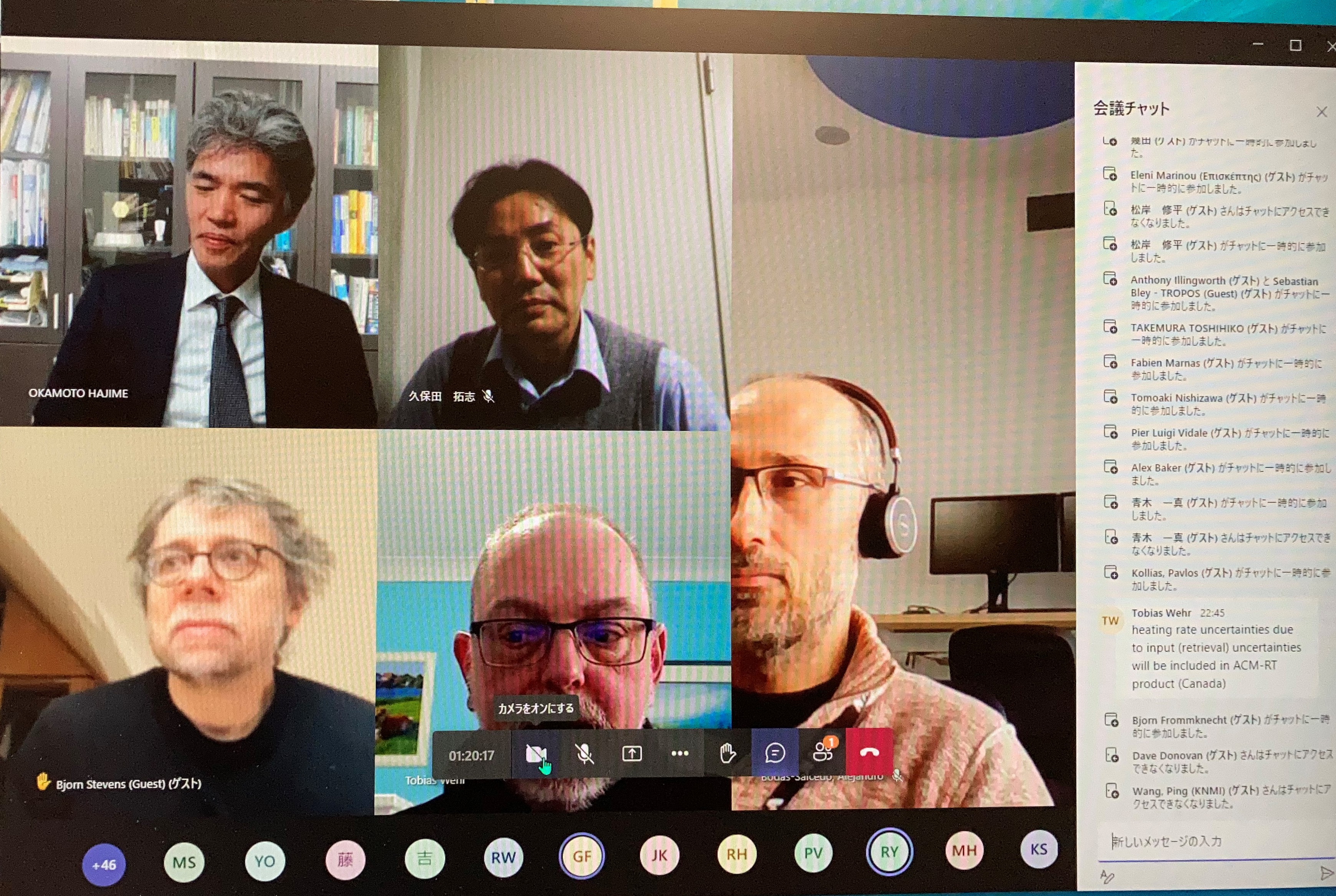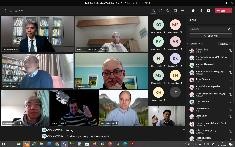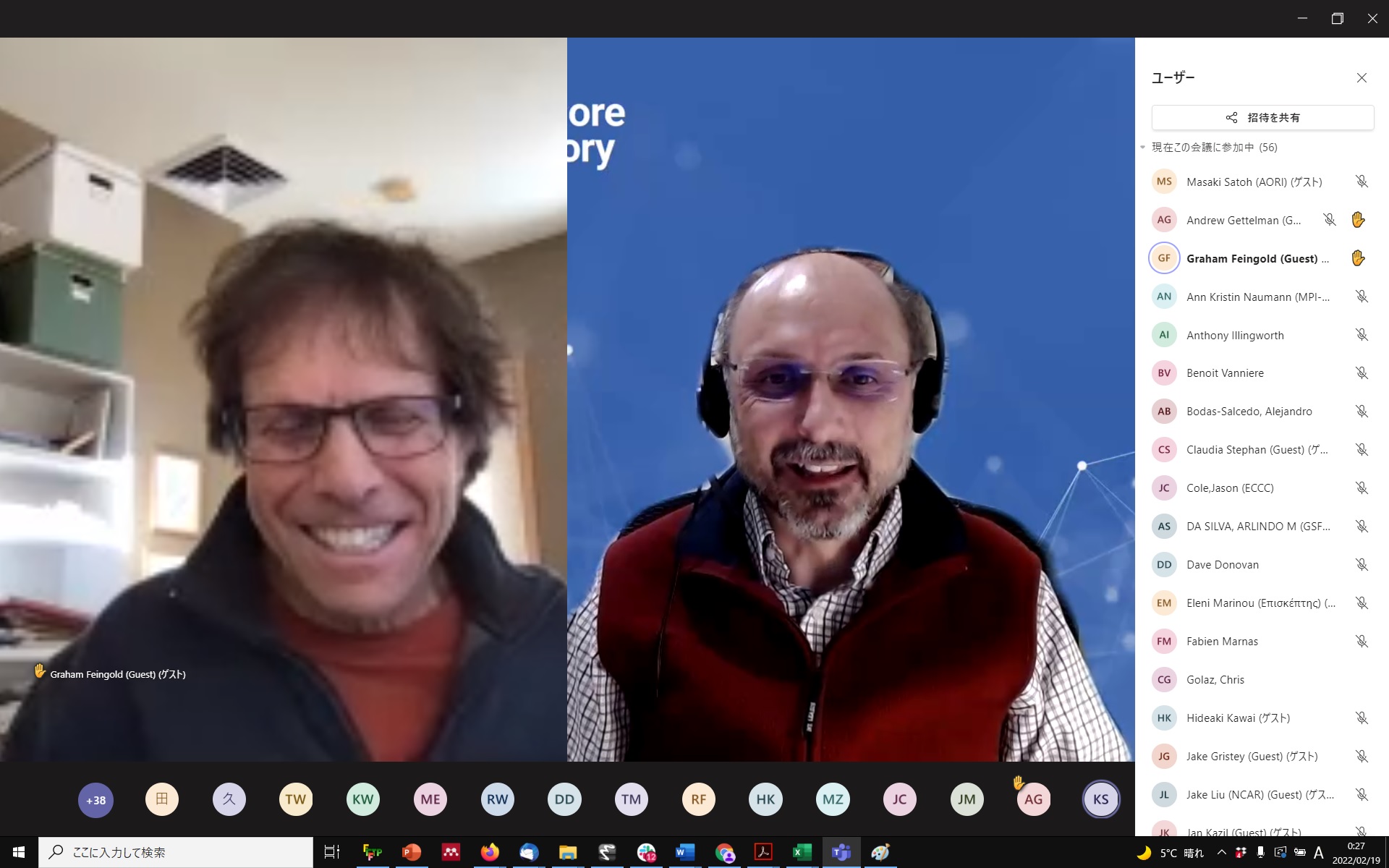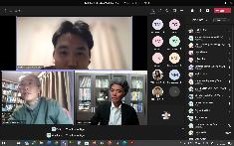- Masaki Satoh (AORI/The University of Tokyo)
- Kenta Suzuki (AORI/The University of Tokyo)
- Bjorn Stevens (MPI-M)
- Hajime Okamoto (RIAM/CIRAP, Kyushu University)
- Takuji Kubota (JAXA)
Jointly hosted by JAXA; The Center for Integrated Research on Atmospheric Physics (CIRAP), Kyushu Univ; Research Institute for Applied Mechanics (RIAM), Kyushu Univ.; AORI, The University of Tokyo, and other related institutions (TBC)
All talks should be within 15min including Q&A and discussions.
DAY1: 16 Feb. (Wed), 2022
Start: 13:00 UTC
Chair: Hajime Okamoto; Rapporter: Woosub Roh
Introduction:
Simulators:
Assimilations:
Start: 13:00 UTC
Chair: Masaki Satoh; Rapporter: Tatsuya Seiki
Wrap-up of DAY1
Global Storm-Resolving Models and DYAMOND w GV:
Process analysis/modeling:
Start: 13:00 UTC
Chair: Kentaroh Suzuki; Rapporter: Takuro Michibata
Wrap-up of DAY2
General Circulation Models:
Wrap-up of DAY3: ~15:30 UTC
The Earth Clouds, Aerosol and Radiation Explorer (EarthCARE; hereafter, ECARE) is a joint European/Japanese (ESA/JAXA/NICT) mission. 94GHz-Doppler cloud profiling radar, high spectral resolution lidar (HSRL) operated at 355 nm, multi spectral imager and broad band radiometer will be employed. The combination of these instruments will provide three-dimensional distributions of clouds with vertical motion, aerosols, and precipitation and their radiative characteristics.
In this workshop, we first introduce ECARE to modelers: What's new with ECARE, and what are major physical quantities to be derived from ECARE. Then, we plan to have discussions on the following key topics in this workshop.
- Evaluation/improvement of cloud/convection/aerosol processes of models through ECARE observations.
- Key questions/issues arising from Global Storm Resolving Models:
Lessons from DYAMOND and new initiatives.
- Key questions/issues arising from GCMs or climate modeling:
Uncertainties of GCMs related to clouds/convection. Lessons from past COSP analysis on CMIP models and new initiatives.
- Analysis:
Talks on topical analysis studies will be encouraged, including new research initiatives using Doppler cloud radar: e.g. global view of vertical motions/mass flux.
- Satellite simulators:
Overview of existing satellite simulators and tasks for analysis of ECARE using simulators
- Assimilation:
Assimilation is a significant part of the satellite-modeling collaboration. In this workshop, overviews of assimilation activities related to ECARE will be introduced. Technical details will be discussed in a separate assimilation meeting in the future. New ideas of assimilation, such as parameter estimation, might be covered.
- Introduction to forthcoming field campaigns in support of ECARE and modeling collaborations.
- Discussions on sciences connected to NASA/AOS (or ACCP), which is planned for launch around 2030, including possible collaborations with EarthCARE.
Main theme: How can models and ECARE collaborate?
Specifically
- How to evaluate/improve models by ECARE data?
- What are the major issues/biases of models in representations of cloud, convection, precipitation and aerosols?
- Process understanding: cloud, precipitation, convection, radiation and their coupling.
- New research areas/subjects arising from ECARE.
